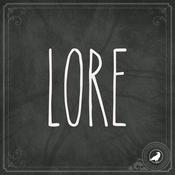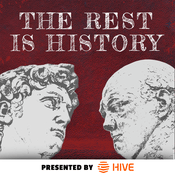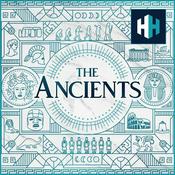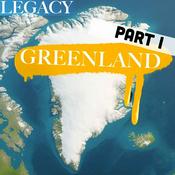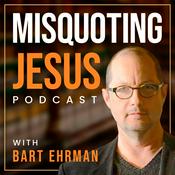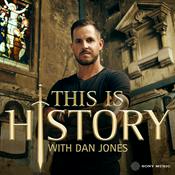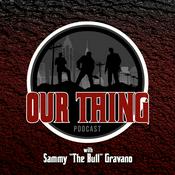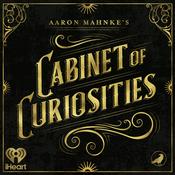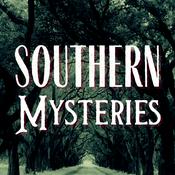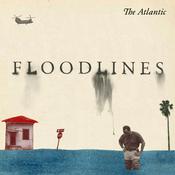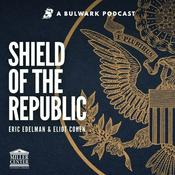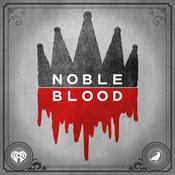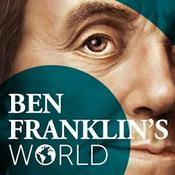Available Episodes
5 of 50
- The Astronomical Problem of Space JunkWe have launched all manner of satellite and machinery into low-Earth orbit. But what goes up must come down. Most often, these items burn up in the atmosphere upon re-entry, which isn’t good for air quality or the ozone layer.But not everything incinerates — and increasing amounts of debris are hurtling back toward Earth and landing in backyards and farm fields. Falling detritus disrupts air travel and risks collision with infrastructure and people on the ground. There are those who argue that additional regulation is required around the launching and de-orbiting of these materials.In this episode, host Ari Daniel speaks with astronomer Samantha Lawler and Smithsonian contributing writer Dan Falk about space junk and the concern among researchers that it is becoming a growing threat to public safety.To subscribe to “There’s More to That,” and to listen to past episodes about all the shipwrecks hidden beneath the waters of the Great Lakes; the river of birds, bats and bugs fluttering, often invisibly, in the skies above; and the story behind the timelessness of Superman, find us on Apple Podcasts, Spotify, iHeartRadio or wherever you get your podcasts.“There’s More to That” is a production of Smithsonian magazine and PRX Productions. From the magazine, our team is Ari Daniel, Debra Rosenberg and Brian Wolly. From PRX, our team is Ali Budner, Cleo Levin, Genevieve Sponsler, Sandra Lopez-Monsalve and Edwin Ochoa. The executive producer of PRX Productions is Jocelyn Gonzales.Fact-checking by Stephanie Abramson.Episode artwork by Emily Lankiewicz. Illustration by Emily Lankiewicz / Images by Samantha Lawler / NASA / smspsy via Adobe Stock and public domain.--------26:45
- Why Are There So Many Shipwrecks in the Great Lakes?Beneath the waters of the Great Lakes, thousands of shipwrecks, hulking carcasses of a bygone era, have been hiding for generations, just waiting to be revealed. Once someone stumbles upon one of these sunken treasures in Lake Michigan or Lake Superior, Tamara Thomsen gets a call.Thomsen is a maritime archaeologist with the Wisconsin Historical Society’s Maritime Preservation and Archaeology program. Her job is to investigate and survey shipwreck sites. Over the years, Thomsen has added some of these ships to the National Register of Historic Places. And she and her colleagues have also unearthed dugout canoes that were fashioned thousands of years old by the Indigenous people who lived on this land.In this episode, host Ari Daniel speaks with Thomsen about how she took up this profession, why she views shipwrecks as time capsules, why so many vessels met their watery grave on the Great Lakes, and how one stays warm at depth when diving for these wrecks for hours at a time.To subscribe to “There’s More to That,” and to listen to past episodes about the S.S. Edmund Fitzgerald, the return of a set of important belongings to the Lakota community and a baseball field resurrected in a World War II-era Japanese internment camp, find us on Apple Podcasts, Spotify, iHeartRadio or wherever you get your podcasts. “There’s More to That” is a production of Smithsonian magazine and PRX Productions. From the magazine, our team is Ari Daniel, Debra Rosenberg and Brian Wolly. From PRX, our team is Ali Budner, Cleo Levin, Genevieve Sponsler, Sandra Lopez-Monsalve and Edwin Ochoa. The executive producer of PRX Productions is Jocelyn Gonzales.Fact-checking by Stephanie Abramson.Episode artwork by Emily Lankiewicz. Illustration by Emily Lankiewicz / Images by Zach Whitrock / Wisconsin Historical Society and public domain.--------32:29
- The ‘Edmund Fitzgerald’ Sank Half a Century Ago. We’re Still Fascinated.Half a century ago, on an unseasonably warm fall day, the freighter SS Edmund Fitzgerald set off from the western edge of Lake Superior with a cargo full of iron ore. Within hours, a ferocious storm gathered in strength, ultimately producing 50-foot waves and sinking the prized vessel. There were no survivors. The exact cause of its demise remains unknown.Over the decades, many ships have faced a similar fate on the Great Lakes, a part of the world that some say is more dangerous than the open ocean. But the tragedy of the Edmund Fitzgerald looms the largest in our collective national memory — and it led to changes in the maritime industry that dramatically improved the safety of shipping.In this episode, host Ari Daniel speaks with author John U. Bacon about what made the Edmund Fitzgerald famous even before it sank, what we know and don’t know about the crew’s final moments, and the ship’s lasting legacy.Read more coverage of the sinking of the Fitzgerald here.To subscribe to “There’s More to That,” and to listen to past episodes about the return of a set of important belongings to the Lakota community, the search for the remains of three fallen World War II airmen, and the role that enslaved Africans and Southern colonists played in launching the American Revolution, find us on Apple Podcasts, Spotify, iHeartRadio or wherever you get your podcasts.“There’s More to That” is a production of Smithsonian magazine and PRX Productions. From the magazine, our team is Ari Daniel, Debra Rosenberg and Brian Wolly. From PRX, our team is Ali Budner, Cleo Levin, Genevieve Sponsler, Sandra Lopez Monsalve and Edwin Ochoa. The executive producer of PRX Productions is Jocelyn Gonzales.Fact-checking by Stephanie Abramson.Episode artwork by Emily Lankiewicz. Illustration by Emily Lankiewicz / Photo by Lake Superior Maritime Collection at the University of Wisconsin-Superior Special Collections and Archives, Bob Campbell / Images by mdnahidkha23 via Adobe Stock, Newspapers.com and public domain--------28:36
- Birds, Bats and Bugs: The Teeming World Above Our HeadsThe skies above us are filled with legions of migrating birds, bats, bugs and microbes. And yet we know little about their movements and intentions, mostly because this ethereal world has largely been inaccessible for research. But new technologies are providing a window into how animals use their aerial habitat to travel and hunt.The burgeoning field is called “aeroecology,” and researchers are revealing just how substantially humans are altering the world overhead—with deadly consequences for flying animals. The new insights are giving us ways to make the air safer for these creatures.In this episode, host Ari Daniel speaks with Dustin Partridge of the New York City Bird Alliance as he directs the intermittent shutdown of the iconic Tribute in Light to protect disoriented birds during 9/11 this year. And we hear from Smithsonian contributing writer Jim Robbins about what aeroecology is telling us about the ecosystem above.To subscribe to “There’s More to That,” and to listen to past episodes about the army of people devoted to saving native bees, the prehistoric cave that entombed animals for millennia and the sex lives of dinosaurs, find us on Apple Podcasts, Spotify, iHeartRadio or wherever you get your podcasts.“There’s More to That” is a production of Smithsonian magazine and PRX Productions. From the magazine, our team is Ari Daniel, Debra Rosenberg and Brian Wolly. From PRX, our team is Jessica Miller, Genevieve Sponsler, Adriana Rosas Rivera, Cleo Levin, Sandra Lopez Monsalve and Edwin Ochoa. The executive producer of PRX Productions is Jocelyn Gonzales.Fact-checking by Stephanie Abramson. Our music is from APM Music.Episode artwork by Emily Lankiewicz. Illustration by Emily Lankiewicz / Photos by malik / Jim via Adobe Stock / Dina Litovsky and public domain.--------31:33
- A Chance for Healing, 170 Years After a Lakota MassacreThis fall, 69 belongings made their way home to the Rosebud Reservation in South Dakota from the Smithsonian’s National Museum of Natural History in Washington, D.C. These items, which included buffalo robes, blankets, moccasins and a doll, had been taken from the Lakota community after the Blue Water Massacre in 1855, the first major ambush on a Native American community by the U.S. Army. It would become the start of a decades-long campaign against the Plains tribes that would end with the death and displacement of numerous Native Americans.The return of the belongings offers a modicum of closure, but the pain of the massacre lives on among those on the reservation today. In this episode of Smithsonian magazine’s podcast “There’s More to That,” host Ari Daniel speaks with Ione Quigley and Karen Little Thunder, two members of the Rosebud Sioux tribe, and Smithsonian contributing writer Tim Madigan about the journey of these belongings from their birthplace to a museum and back.To subscribe to “There’s More to That,” and to listen to past episodes about the search for the remains of fallen airmen from World War II, a baseball field resurrected in a Japanese internment camp and a deeper look at lesser known stories of the American Revolution, find us on Apple Podcasts, Spotify, iHeartRadio or wherever you get your podcasts.“There’s More to That” is a production of Smithsonian magazine and PRX Productions. From the magazine, our team is Ari Daniel, Debra Rosenberg and Brian Wolly. From PRX, our team is Jessica Miller, Genevieve Sponsler, Adriana Rosas Rivera, Cleo Levin, Sandra Lopez Monsalve, Pedro Rafael Rosado and Edwin Ochoa. The executive producer of PRX Productions is Jocelyn Gonzales.Fact-checking by Stephanie Abramson. Our music is from APM Music.Episode artwork by Emily Lankiewicz. Photos by Gary Whitton / Nawaphon via Adobe Stock and public domain.--------39:43
More History podcasts
Trending History podcasts
About There's More to That
Smithsonian magazine covers history, science and culture in the way only it can — through a lens on the world that is insightful and grounded in richly reported stories. On There's More to That, meet the magazine's journalists and hear how they discover the forces behind the biggest issues of our time. Every two weeks, There’s More to That will give curious listeners a fresh understanding of the world we all inhabit.Host Ari Daniel is an independent science journalist who has reported across six continents and contributes regularly to National Public Radio among other outlets. In a previous life, he trained grey seal pups and studied wild Norwegian killer whales. In the fifth grade, Ari won the "Most Contagious Smile" award.
Podcast websiteListen to There's More to That, Lore and many other podcasts from around the world with the radio.net app
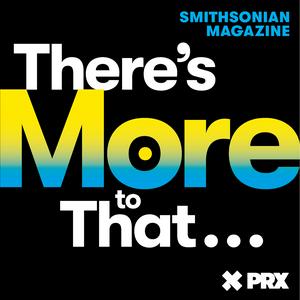
Get the free radio.net app
- Stations and podcasts to bookmark
- Stream via Wi-Fi or Bluetooth
- Supports Carplay & Android Auto
- Many other app features
Get the free radio.net app
- Stations and podcasts to bookmark
- Stream via Wi-Fi or Bluetooth
- Supports Carplay & Android Auto
- Many other app features


There's More to That
Scan code,
download the app,
start listening.
download the app,
start listening.
